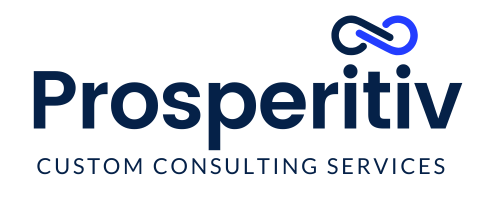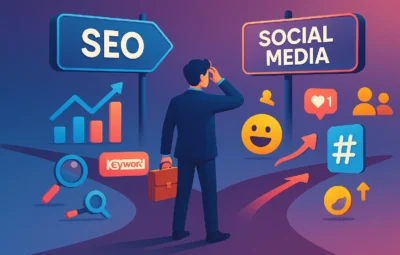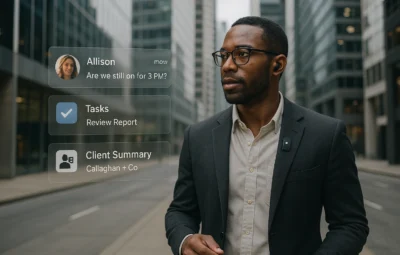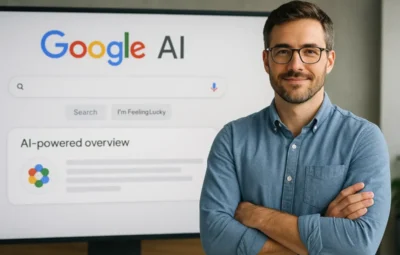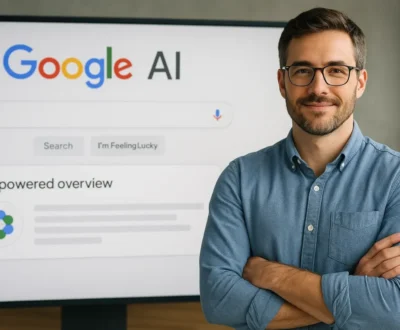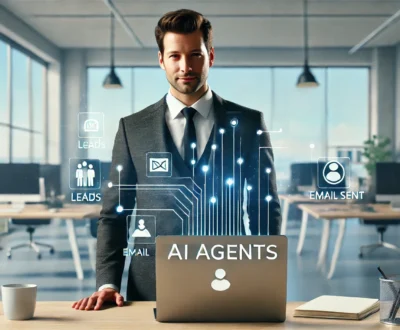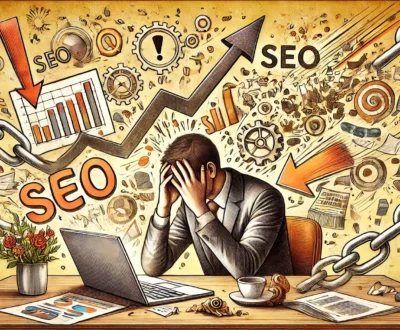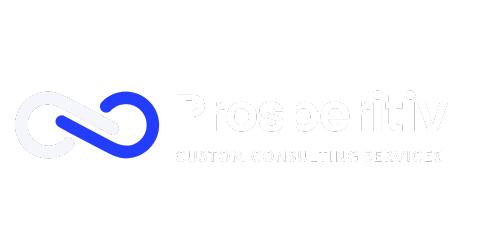Could AI Smart Glasses Be The Biggest Marketing Shift Since the Smartphone?
From the printing press to smartphones, every innovation has transformed the way businesses connect with consumers. Now, AI smart glasses are about to cause the next big disruption. When screens disappear and AI-powered overlays take over your customer’s world, marketing as we know it ends.
The question is: Will your business survive this shift?
Gary Vaynerchuk famously said:
“Technology doesn’t care about your opinion—it just moves forward.”
What Are AI Smart Glasses—and Why Are They a Big Deal?
AI smart glasses combine augmented reality (AR) with artificial intelligence, overlaying digital information into your real-world view. Unlike VR headsets, they’re designed to look like regular eyewear while providing instant, AI-driven context.
Imagine this:
- Walking past a coffee shop → Your glasses show “20% off your favourite latte today.”
- Picking up a new trainer → See price comparisons, reviews, and influencer looks floating next to it.
This is augmented reality marketing powered by AI. Analysts predict the AR market could hit £160 billion by 2030—and smart glasses are leading the charge. AI smart glasses aren’t the only innovation reshaping interaction. OpenAI recently introduced a device that feels like a personal Jarvis—read about it here: OpenAI’s Wearable AI Device.
Why AI Smart Glasses Will Change Marketing Forever
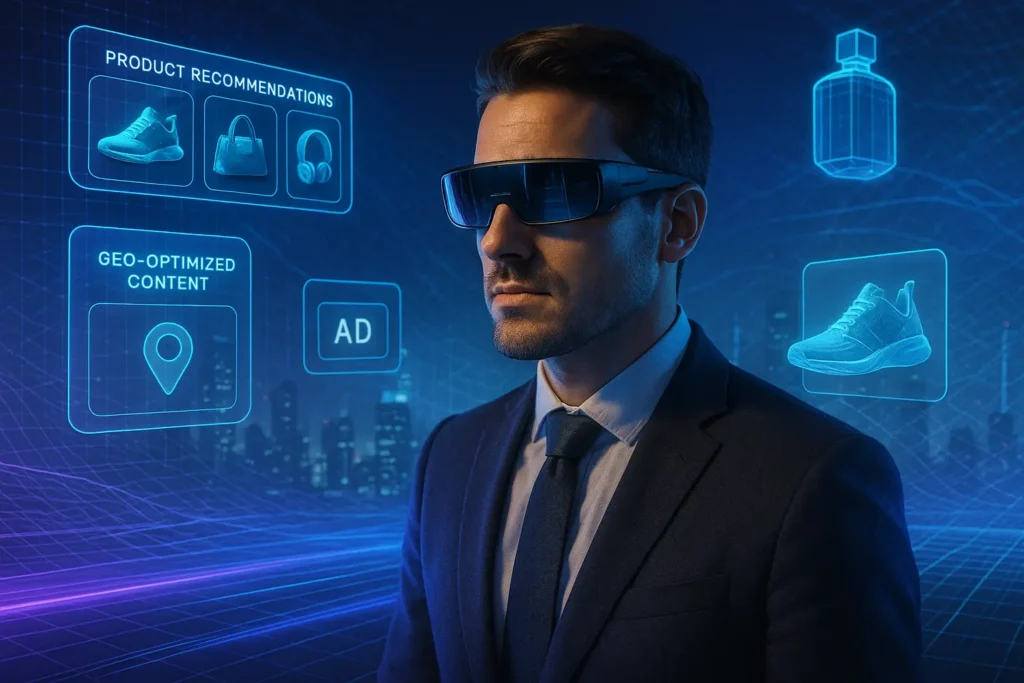
1. SEO Will Evolve Into GEO
Traditional SEO is built for typed searches. But with AI smart glasses, users will speak, gesture, or rely on contextual AI for answers. The result?
No more SERPs (search engine result pages). Answers appear in your field of vision instantly.
This is where Generative Engine Optimisation (GEO) comes in. To stay visible, brands need:
- Structured data for AI assistants
- Machine-readable content (e.g., 3D product models for AR)
- Conversational, question-based content
Example: Instead of ranking on Google, you’ll compete to appear in the AI overlay recommendation when someone looks at a product in-store.
2. AI-Driven Advertising Will Be Hyper-Personalised
No more irrelevant ads. With AI-driven advertising and smart glasses:
- Look at a product → AI predicts your preferences and budget
- Walking through a mall → See real-time discounts from nearby stores
- At the gym → Get supplement recommendations with AR demos
This level of personalisation means businesses must build dynamic, AI-ready marketing ecosystems.
3. Content Will Become Immersive
Static images and even traditional video will feel outdated. The future of marketing is immersive:
- AR try-ons for clothing and accessories
- Interactive 3D product models
- Virtual showrooms and AI-guided tours
- For ecommerce, this means building assets that smart glasses can render instantly.
The Impact of AI Smart Glasses on Brick-and-Mortar Businesses
For physical stores, AI smart glasses are a game-changer:
- Restaurants: Glasses display menu highlights, reviews, and “Book Now” buttons when you walk by
- Retail: Instant discount alerts and AR try-ons in-store
- Gyms & Salons: AI books appointments instantly based on user intent
Local SEO could die. Instead, AI-powered AR visibility will drive foot traffic.
What's The Impact of AI Smart Glasses on Online Businesses?
Ecommerce will move beyond clicks:
- AI curates personalised product collections in AR
- Shows reviews and price comparisons instantly
- Integrates social proof in real-time (TikTok videos, influencer looks)
Brands not optimised for AI & AR discovery will vanish from consumer view.
The End of Traditional Ads
Pop-ups and banner ads? Gone.
Instead:
- Brands must exist within AI overlays naturally
- Optimisation for AR compatibility and AI-driven interfaces is the new norm
How to Future-Proof Your Business for AI Smart Glasses
1. Embrace GEO (Generative Engine Optimisation)
SEO as we know it will evolve into GEO, which means optimising for AI-driven interfaces rather than search engines. Here’s how to prepare:
- Write content in a Q&A style to help AI assistants pull clear answers.
- Use structured data (schema markup) so AI can interpret your site content easily.
- Focus on intent-based content—what people actually want to know, not just keywords.
- Create conversational tone assets because voice queries and natural language will dominate.
While SEO will evolve, it’s still very important today. If you’re deciding where to invest, i.e. search or social, read our guide on Social Media vs SEO: What’s Best for My Business?
2. Invest in AR-Ready Content
AI smart glasses will rely on visual and interactive experiences, not just text. Start creating assets that work in AR environments:
- 3D product models: Platforms like Adobe Substance and Blender let you create 3D versions of products.
- High-quality imagery with transparent backgrounds: Essential for AR layering.
- Short, dynamic videos optimised for AR previews (think 3D spins, try-ons).
- Test AR filters on social platforms like Instagram and Snapchat—they’re early indicators of where this is heading.
3. Adopt AI-Powered Marketing Strategies
Personalisation will go from optional to mission-critical. Here are some practical steps:
- Start using tools that forecast customer behaviour, such as Salesforce Einstein, Pecan AI, or IBM Watson. These platforms can predict purchase intent, churn risk, and ideal timing for offers—helping you target customers before they even make a decision.
- Leverage future-ready AI content and marketing tools and CRMs like HubSpot AI, Jasper, or GoHighLevel (GHL).
- Dynamic content generation: Show tailored offers based on location, weather, or previous behaviour.
- Voice & AR-ready copywriting: Short, punchy text that AI can easily serve in overlays.
- Automate retargeting with AI-driven ads: Adjust creatives in real-time based on engagement signals.
Want to understand how visitors engage with your offers before building AR-ready content? Learn more about click tracking for GHL users to optimise your funnel analytics.
4. Build Future-Ready Websites
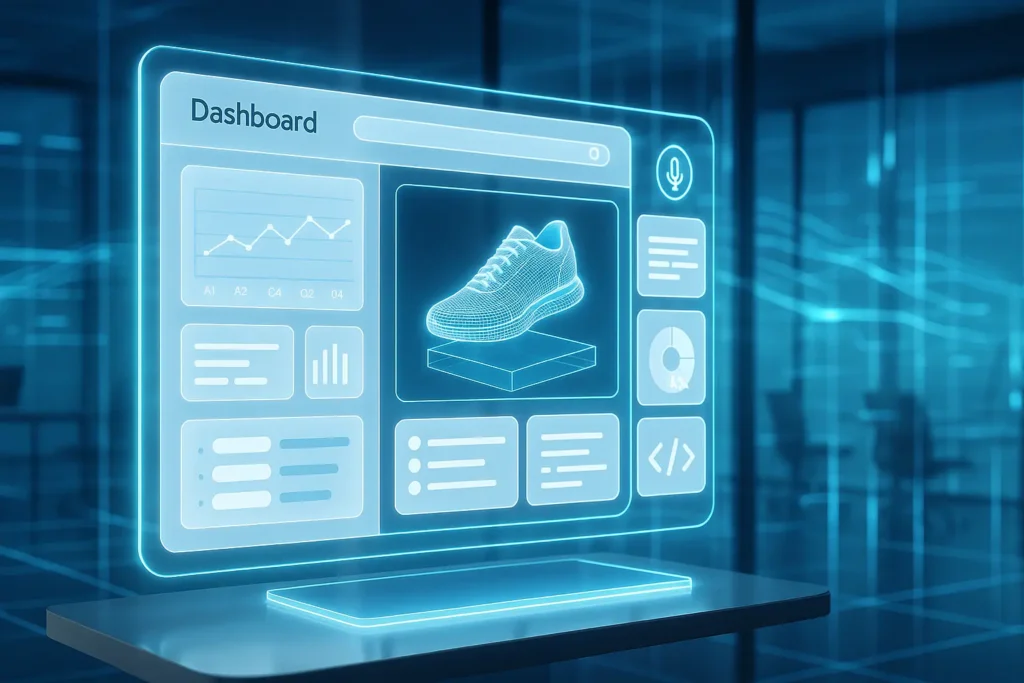
Your website will still matter but as a data hub for AI assistants, not just a user-facing experience.
Tips to prepare for AI smart glasses:
- Clean, fast architecture: Lightweight, mobile-first design for optimal AI parsing.
- Structured, modular content blocks: Easy for AI to index and repurpose into answers.
- AR-compatible product pages: Include 3D files, interactive product previews, and clear metadata.
- Implement voice search optimisation: Add FAQs in natural language and structured Q&A sections.
Final Thoughts: The Search Bar Is Disappearing—Are You Ready?
AI smart glasses aren’t a passing trend, they’re the next big interface revolution. Just like businesses that ignored the internet or mobile-first design were left behind, brands that dismiss this shift will disappear.
The question isn’t if this change is coming but rather how fast you can adapt. Businesses that embrace GEO (Generative Engine Optimisation), AR-ready content, and AI-powered strategies will lead. Those that don’t? They won’t even be visible in the world your customers see.
Don’t wait for disruption to make you irrelevant. Take action now. Be ready for a world with AI smart glasses. Future-proof your business with Prosperitiv today.
FAQS:
Click the + to read any answer or visit our most FAQ page to review the most frequently asked questions across all our Elite Locations.
If you click on a ‘Category’ or ‘Tag’ link, the page will ‘refresh’ and reload the page showing the top of the page first, you’ll then just need to scroll down to the FAQ section to see the results for the Category or Tag you selected.
SEO will evolve into GEO, which focuses on AI-driven answers instead of ranked web pages. Businesses need to shift from keywords to intent-based content, implement structured data, and create content that AI assistants can serve in AR environments. Without these changes, your brand risks becoming invisible in future search experiences.
Start with four key actions:
- Embrace GEO strategies like conversational content and schema markup.
- Create AR-compatible content, such as 3D product models.
- Use AI-powered marketing tools for predictive targeting and personalisation.
- Optimise your website for speed, modular content, and voice search.
Businesses that prepare early will dominate when this tech goes mainstream.
AI smart glasses won’t eliminate marketing—but they will change it completely. Instead of customers searching on Google, they’ll receive AI-driven overlays showing personalised offers, reviews, and AR experiences in real time. Traditional SEO and static ads will decline, making GEO (Generative Engine Optimisation) and AR-ready content essential for visibility.
Recent Posts
Popular Posts
About us and this blog
We are a digital marketing company with a focus on helping our customers achieve great results across several key areas.
Request a free quote
We offer professional SEO services that help websites increase their organic search score drastically in order to compete for the highest rankings even when it comes to highly competitive keywords.
Subscribe to our newsletter!
More from our blog
See all postsRecent Posts
- Are AI Summaries Killing Your Traffic — or Creating a New Opportunity? September 11, 2025
- Synthetic Intelligence Is Coming. What SMEs Should Know August 29, 2025
- AI Smart Glasses Will Rewrite Marketing: Are You Ready for GEO? July 24, 2025
